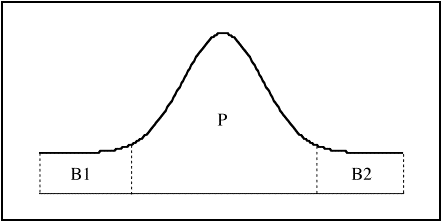
Once the Bragg plane is in the correct orientation for reflection, the detector scans through the diffraction spot by a combination of 2θ and ω motion. The detector consists of a scintillation counter which utilizes a chemical compound (often a sodium iodide crystal) that converts X-ray photons to visible light photons and a photomultiplier tube which converts the light photons into an electrical signal. In this way the intensity of the reflected X-ray beam can be measured. (A distinction should be made between energy and intensity: the energy of the diffracted beam is determined by the wavelength of the incident X-radiation and does not change during the course of the experiment; the intensity is a measure of the number of X-ray photons arriving at the detector). As the detector scans through the reflection, at first it measures only background, then the intensity increases to a maximum at the reflection center, and then decreases to background:


